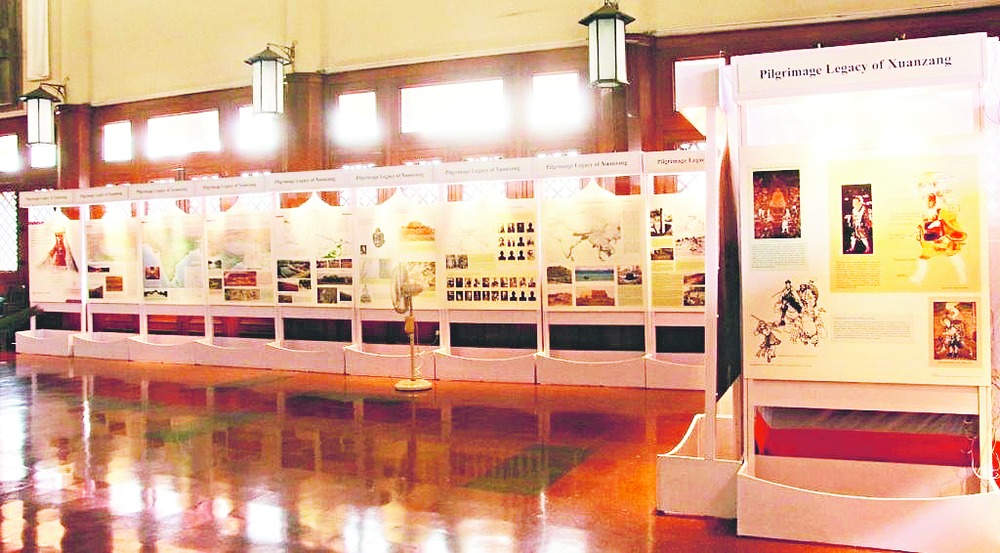
The Nava Nalanda university has put up a permanent exhibition on Chinese monk and traveller Xuanzang - more famous in India as Hiuen Tsang - at its Xuanzang Memorial Hall.
"The Pilgrimage Legacy of Xuanzang" illustrates the life and legacy of Hiuen Tsang who visited India during the reign of King Harsvardhana to collect Buddhist manuscripts from the ancient Nalanda University. The exhibition depicts Hiuen Tsang's life using 18 maps and a number of photographs.
Deepak Anand, a senior researcher at Nava Nalanda Mahavihara, the university under the Union ministry of art and culture affairs, and Aparajita Goswami, a research scholar at Jawaharlal Nehru University (JNU), have jointly conceptualised and developed the exhibition.
The exhibition also aims to generate awareness about important Buddhist places that are not too popular.
"Buddhism was lost in the Indian subcontinent by the 14th century and travelogues of Hiuen Tsang in the mid-19th century played an important role to rediscover the lost heritage," Deepak said. "Based on Hiuen Tsang's work, places like Rajgir, Vaishali, Nalanda, Sarnatha and Kapilavasthu were identified in the 19th century. British archaeologist Alexander Cunningham also played a crucial role in excavating few Buddhist monuments. Later, the Archaeological Survey of India was established in 1861 to explore and protect the findings based on Hiuen Tsang's work. His travelogues are one of the five classics in China."
Aparajita said: "The exhibition is a result of six years of research and documentation. Depicting the complete journey and observations made by Hiuen Tsang on a single map can be achieved using the Geographic Information System (GIS) technology."
Nava Nalanda Mahavihara was established in 1951 to revive the cultural tradition of the ancient Nalanda University.
Work on the memorial hall was initiated in 1957 with a dual objective of commemorating the visit of Hiuen Tsang to the ancient Nalanda University and establishing a research institute to research and promote his works.
It was finally inaugurated in 2007. Nava Nalanda Mahavihara director Ravindra Pant said the university plans to develop Xuanzang Memorial Hall as an orientation centre for national and international Buddhist pilgrims.
"Nava Nalanda Mahavihara decided to narrate Hiuen Tsang's contributions through maps in 2008," said Pant.
Nava Nalanda Mahavihara has been organising a 13.5km walk in the Rajgir-Jethian valley in the month of December to promote awareness about Hiuen Tsang.
It is believed that the Buddha took this path to arrive at the ancient Rajgriha from Jethian on being invited by Bimbisar, the then king of the Magadha Empire.
"Hiuen Tsang is considered the pioneer of Buddhist archaeology in India," said Deepak. "Though Cunningham had identified most of the Buddhist sites in India, he had inherited most of his knowledge from Hiuen Tsang. He was a great guide and translator. His travelogue on the journey from China to India is of great significance."










